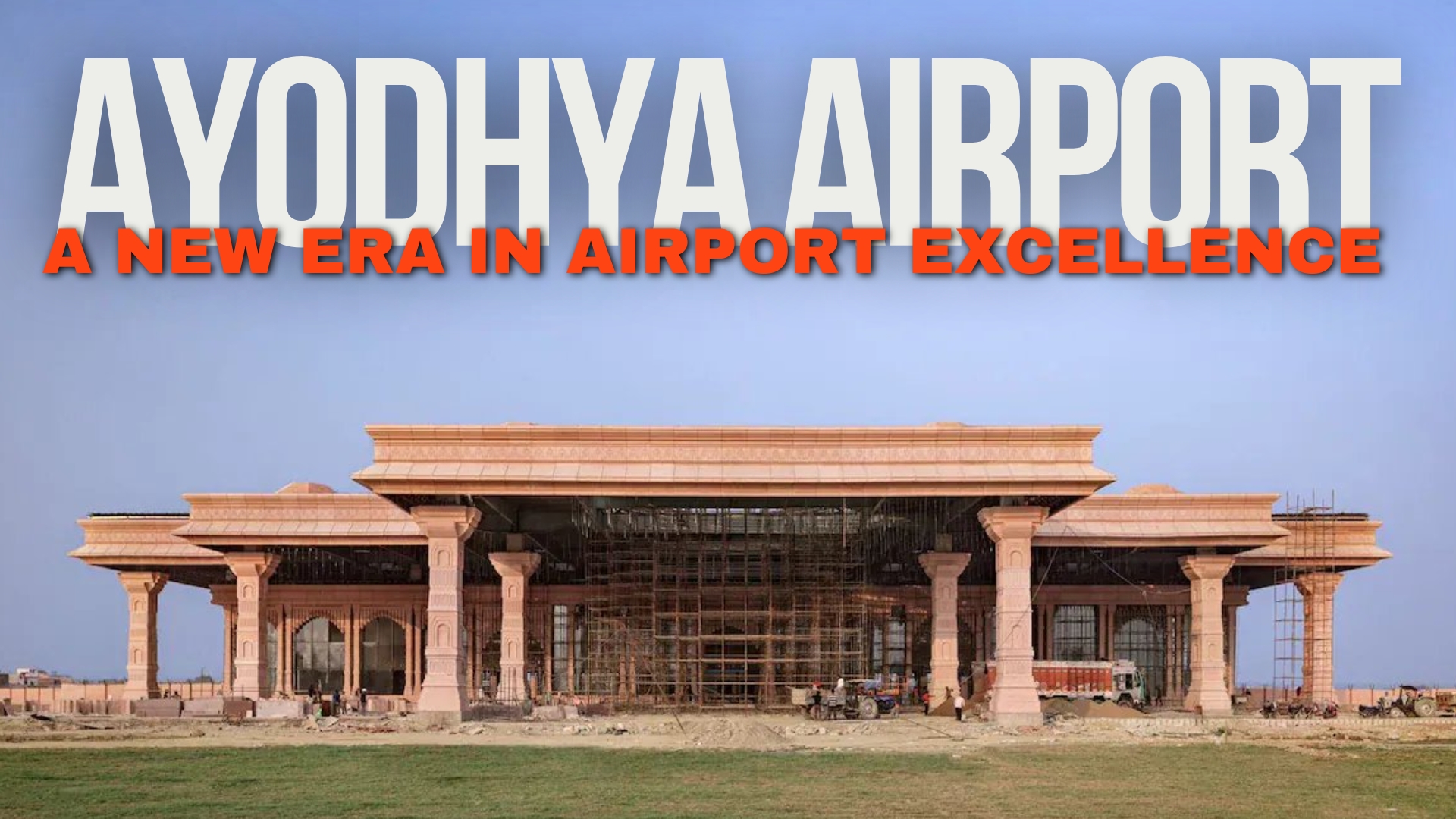The Ayodhya Airport, set to be inaugurated by Prime Minister Narendra Modi, marks a new era in airport excellence and cultural identity. Designed by Sthapati and built at a cost of Rs 1,450 crore, the Ayodhya Airport emerges as an infrastructural marvel, promising holistic community development and cultural enrichment
Ayodhya Airport Location and Development

The Ayodhya International Airport, also known as Maharishi Valmiki International Airport Ayodhya Dham, is being constructed in Faizabad, Uttar Pradesh, India. The project is being developed by the Airports Authority of India (AAI) and is strategically located near National Highway 27 and Faizabad Junction railway station.
Efforts to develop the airport began with the Uttar Pradesh government signing a Memorandum of Understanding (MoU) with AAI in February 2014. The construction of the airport started in February 2022, and it is expected to be completed by June 2023. The airport is being developed in three phases, with an estimated investment of Rs 2.24 billion for phase one. The completion of phase one will enable the airport to handle 300 passengers during peak hours and serve approximately 600,000 passengers annually.
Infrastructure and Design
The Ayodhya Airport features state-of-the-art infrastructure and a culturally rich design that reflects the city’s heritage. The terminal building, spread over 6,000m, is designed to fuse regional architecture with a modern accent. It exemplifies the concept and spirit of Ram Mandir, with the terminal roof adorned with shikaras of varying heights. The terminal also showcases ornate columns depicting significant moments from the Ramayana, creating a sense of cultural immersion for passengers.
The airport’s runway is being widened and extended to a length of 2,200 meters and a width of 45 meters, with 7.5-meter shoulders on either side. The construction includes the development of an apron, a link taxi track, and an isolation bay to facilitate the smooth operation of aircraft. The terminal will be equipped with passenger amenities such as check-in counters, baggage handling systems, and X-ray baggage inspection systems.
Environmental sustainability is a key focus of the Ayodhya Airport’s design. It incorporates features such as rainwater harvesting, solar-energy-sourced electricity, and skylights, contributing to its eco-friendly nature.
Next Article: Famous personalities of India
Significance and Impact
The Ayodhya Airport holds significant cultural and religious importance as it provides direct access to Ayodhya, a renowned religious destination for pilgrims from around the world. The airport’s development is expected to boost the industrial, business, and tourism sectors in India, while also enhancing the overall airport infrastructure and amenities for travelers. It is anticipated that the airport will create 250 direct jobs during the construction phase and 100 to 150 direct and indirect jobs during its operational phase.
The strategic location of the airport near major transportation routes and the upcoming Ayodhya Ram Temple ensures seamless travel for devotees and tourists, further promoting the cultural and historical significance of the region. The airport’s capacity to handle a large number of passengers and accommodate continuous growth is expected to contribute to the overall growth of the aviation industry in India.
Conclusion
The Ayodhya Airport represents a new era in airport excellence, combining state-of-the-art infrastructure with a design that celebrates the cultural heritage of Ayodhya. With its strategic location, sustainable practices, and capacity to accommodate growing passenger traffic, the airport is poised to become a key hub for travelers visiting Ayodhya and the surrounding areas. As it prepares to open its doors, the Ayodhya Airport stands as a testament to India’s commitment to holistic community development and cultural enrichment.
Disclaimer
All the information given in this blog is for your information only and is not used for commercial purposes. Although we do not ensure the accuracy and completeness of this information. We make every possible effort to do so, but there may still be some errors in it. We Will not be held liable in any way for possible damages arising from the use of the article. (Article Source: Writesonic.com)




